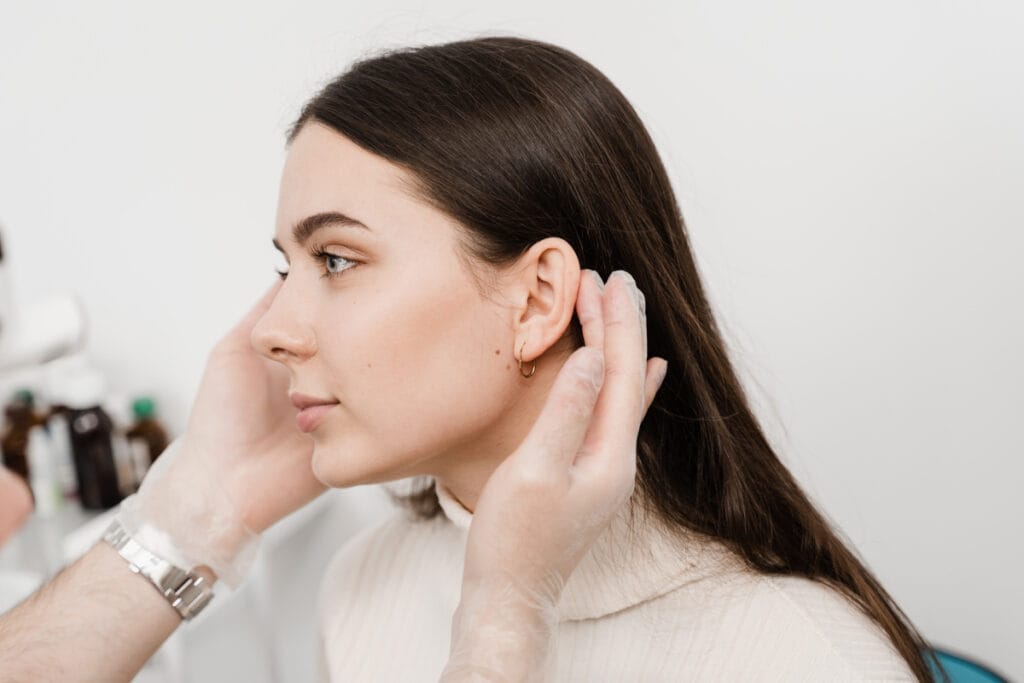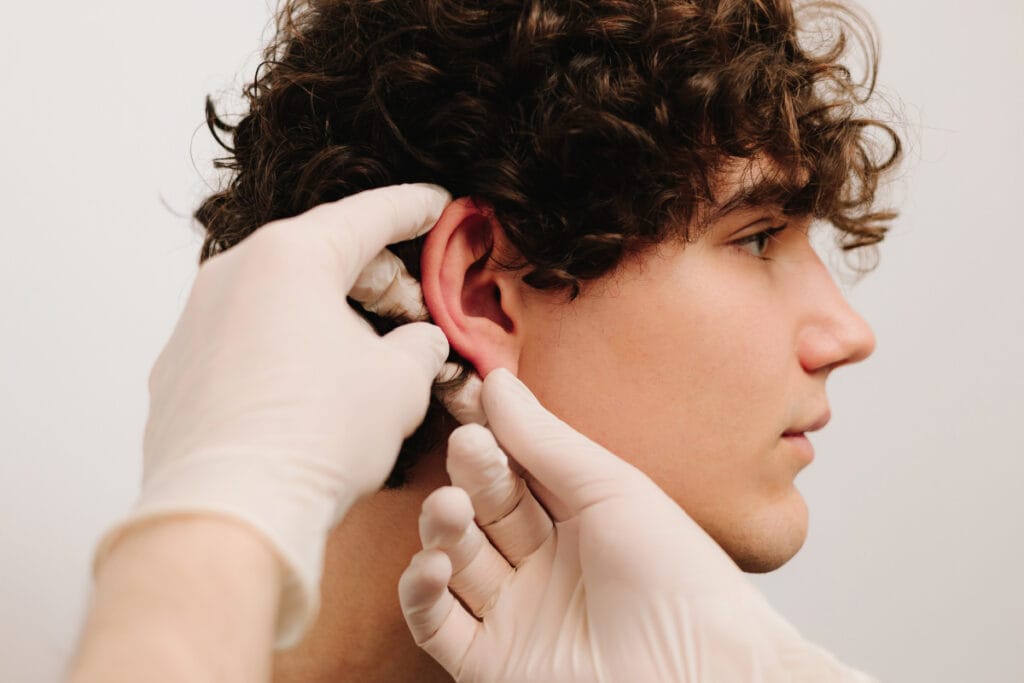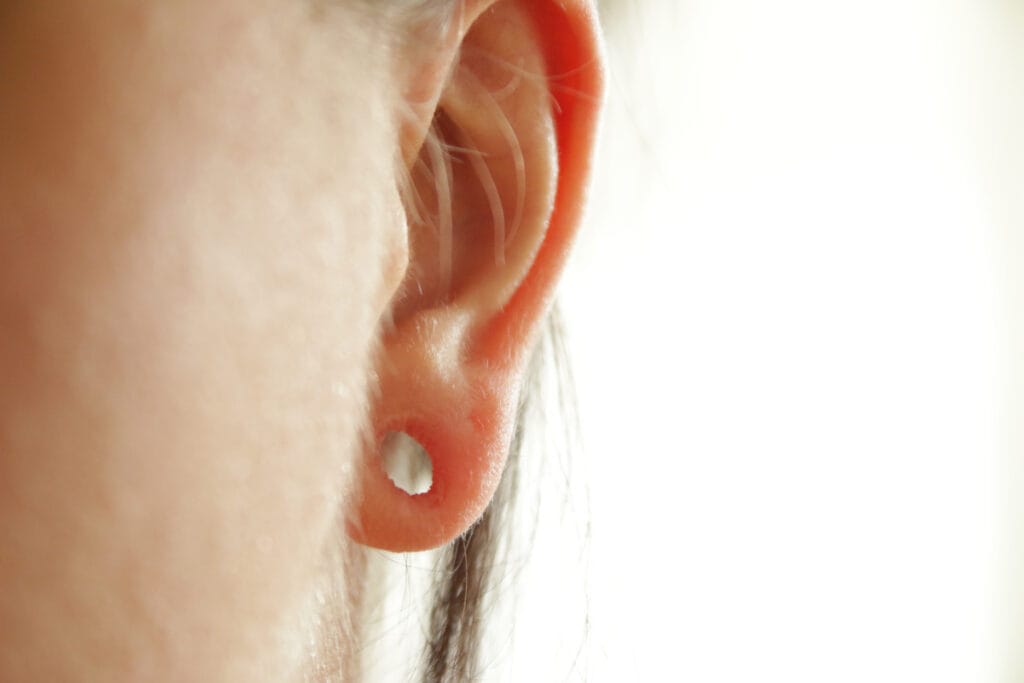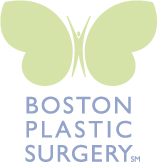For many women, the earlobes can become stretched or torn, typically from long-time use of heavy earrings, injury, ear gauging, or the natural aging process. Misshapen or damaged earlobes can be difficult to hide and limit jewelry choices, but thankfully there is an easy fix! Boston female plastic surgeon Dr. Alannah Phelan performs earlobe repair surgery under local anesthesia with minimal downtime.
What is earlobe repair?
Earlobe repair, also known as earlobe reconstruction, is a precise surgical technique to mend and reshape the earlobe. Dr. Phelan numbs your ears, then carefully reconstructs the earlobe to enhance the structural integrity and aesthetic. This straightforward procedure can address a range of issues including tears from earrings, stretched earlobes from gauges, aging, or trauma-related injuries so you feel more confident.

Benefits of earlobe repair
Earlobe repair offers numerous benefits beyond just cosmetic improvement:
- Creates a natural look
- Allows you to wear earrings again, if desired
- Repairs damage that can cause discomfort
- Enhances self-confidence by correcting noticeable earlobe deformities
Types of earlobe repair procedures
Dr. Phelan offers several types of earlobe repair procedures to address your specific needs and goals:
- Simple earlobe repair for small tears or splits
- Complex earlobe repair for severe damage or stretched earlobes for larger tears or significantly stretched earlobes
- Revision earlobe procedures to address unsatisfactory results from prior surgeries
- Earlobe fat grafting to address deflation from aging, often performed with other areas of facial fat grafting
“There are not enough words to describe how wonderful my experience with Dr. Phelan and the team at Boston Plastic Surgery was. From the second I arrived the morning of my procedure to the warm and thoughtful follow up calls, it has been a pleasure to work with this team. I beyond highly recommend Dr. Alannah. Trust me. You will not be disappointed.”
The earlobe repair procedure
Pre-operative consultation and planning
During your consultation, Dr. Phelan will assess your earlobes, discuss your goals, and develop a personalized treatment plan.
Procedure steps
Earlobe repair surgery typically involves the following steps:
- Local anesthesia is administered to completely numb the area.
- Dr. Phelan makes precise incisions to excise the enlarged piercing hole or remove damaged tissues and then carefully sutures the earlobe to restore its shape.
- Fine sutures secure the incision to hold the restored size and shape.
Adding fat grafting to address earlobe deflation
Depending on your unique case, more tissue may be needed to help fill out the earlobe for the most natural appearance possible. Dr. Phelan may recommend adding a fat grafting procedure if so. Fat grafting (or fat transfer) involves using liposuction in an area of the body, such as the abdomen, to harvest your own natural fat, which is then purified and injected into the earlobe in precise amounts to create a natural appearance.

Recovery and aftercare
Once your sensation returns, you may feel some tenderness after earlobe repair surgery. However, most patients report that discomfort is minimal and require only tylenol during recovery. Some temporary redness and swelling is normal and quickly resolves as you heal. Recovery tends to be short, since no general anesthesia is administered.
We also provide individualized post-operative care instructions so you feel confident caring for your incisions. In general, we’ll ask you to keep the incisions clean and dry. Your sutures will be removed one week post-surgery.
You may return to work and your normal activities the following day. Just be mindful not to disturb your earlobes when changing clothes, talking on the phone, or performing any activity that may strain or put pressure on your earlobes. The initial healing phase takes only 1-2 weeks.
“Dr. Phelan is the most personable, caring, and attentive physician I’ve ever had. From my first consultation to my last post-op appointment, Dr. Phelan patiently answered all of my questions—and never made me feel silly for about my concerns. ”
- Key Benefits
- Glossary
- Anesthesia: Anesthesia is used during earlobe repair to ensure the procedure is pain-free for the patient.
- Local Anesthesia/Local Anesthetic: Local anesthesia is applied to numb the earlobe area, allowing the patient to stay awake while feeling no pain during the repair.
- Torn Earlobes: Torn earlobes are a common issue addressed by earlobe repair.
- New Piercing: After earlobe repair, patients often seek a new ear piercing, which should be done after full healing.
- Dermal Fillers: Dermal fillers are sometimes used in conjunction with earlobe repair to restore volume and shape.
- Facial Plastic Surgery: Earlobe repair falls under the broader category of facial plastic surgery, which includes various procedures to enhance facial appearance.
- Reconstructive Surgery: Reconstructive surgery, including earlobe repair, aims to restore the form and function of body parts affected by trauma or other issues.
- Facial Plastic Surgeon: A facial plastic surgeon is a specialist who performs earlobe repair among other facial plastic surgery procedures to improve aesthetic outcomes.
- Antibiotic Ointment: After earlobe repair, antibiotic ointment is often prescribed to prevent infection and promote healing.
- Piercing Hole: The piercing hole is repaired during earlobe surgery, especially if it has been stretched or torn.
- Earlobe Tears: Earlobe tears, whether partial or complete, are a primary reason individuals seek earlobe repair.
- Stud Earrings: After healing from earlobe repair, patients can typically wear stud earrings as they are lighter and less likely to cause damage.
- Earlobe Reduction: Earlobe reduction is a specific type of earlobe repair aimed at reducing the size of overly large earlobes.
- Clip-On Earrings: Clip-on earrings are a good alternative during the healing period after earlobe repair to avoid putting strain on the healing tissue.
- Silicone Gel Sheeting: Silicone gel sheeting may be recommended post-surgery to minimize scarring on the repaired earlobe.
- Dangling Earrings: Patients are advised to avoid heavy dangling earrings after earlobe repair to prevent further damage.
- Plastic and Reconstructive Surgery: Earlobe repair is a part of plastic and reconstructive surgery aimed at both aesthetic improvement and functional restoration.
- Keloids: Keloids can form as a complication of earlobe repair for patients who are prone to these scars, so it’s important to discuss this risk with your surgeon.Surgical Excision: Surgical excision is a technique used during earlobe repair to remove damaged tissue and reshape the lobe.
- Restores the natural look of the earlobes
- Repairs torn or stretched earlobes
- Corrects earlobe deformities
- Short recovery time
- Minimal scarring
Results
You’ll notice immediate improvements in the shape and size of your earlobes after surgery, as holes and tears will be closed. Once the sutures are removed one week post-op, you’ll see smoother skin. It may take up to 3 months or so for residual swelling to dissipate but final results are typically seen about 8 weeks after surgery. Most patients can have their ears re-pierced, if desired, after 10 weeks.
Earlobe repair scars
Dr. Phelan takes great care to place earlobe repair incisions so that the resulting scar heals as thin and fine as possible. Once the scar matures and fades, it is typically nearly invisible against your skin.

Earlobe repair surgery FAQs
Ready to restore the natural look and function of your earlobes? Schedule your consultation with female facial plastic surgeon Dr. Alannah Phelan. Please call Boston Plastic Surgery at (617) 786-7600 or fill out our contact form.
References »
Grohmann M, Weiland T, Tuca AC, Wimbauer JM. Earlobe Correction of the Pierced Ear: A Systematic Review of the Literature and Principles for Surgical Reconstruction. Facial Plastic Surgery & Aesthetic Medicine. 2023 Mar-Apr;25(2):83-89. doi: 10.1089/fpsam.2021.0269.
Nassour N, Watfa W. Outcomes and complications of Traumatic ear lobe repair techniques: A systematic review. Journal of Cosmetic Dermatology. 2022 Mar;21(3):910-923. doi: 10.1111/jocd.14223.
Scott BL, Anderson Y, Loyo M, Kim MM. Repair of Gauged Earlobes: Case Series and Review of Two Techniques According to Size. Journal of Cutaneous and Aesthetic Surgery. 2021 Jul-Sep;14(3):351-356. doi: 10.4103/JCAS.JCAS_116_20.
Sadasivan K, Kochunarayanan A. A Revised Classification and Treatment Algorithm for Acquired Split Earlobe, With a Description of the Composite Technique and its Outcome. Cureus. 2020 Sep 13;12(9):e10422. doi: 10.7759/cureus.10422.


